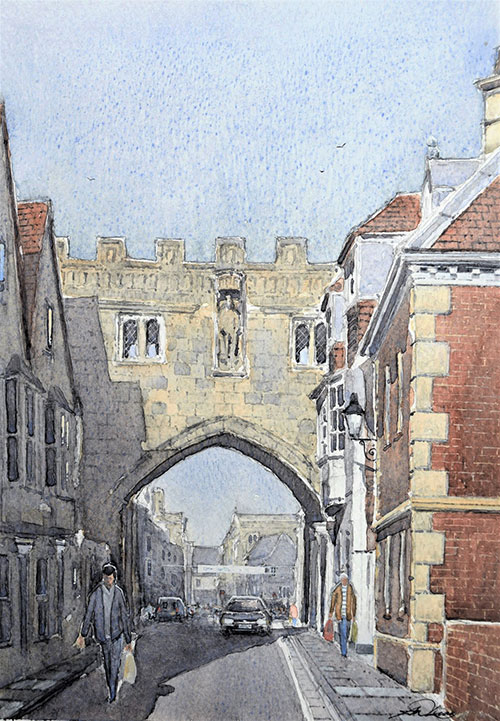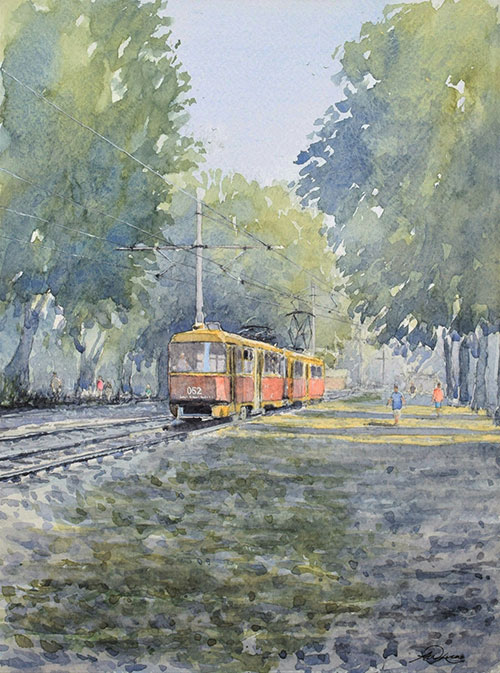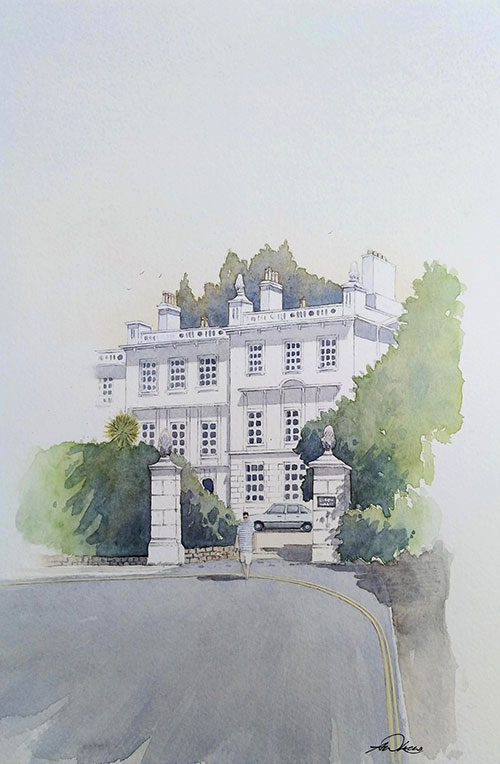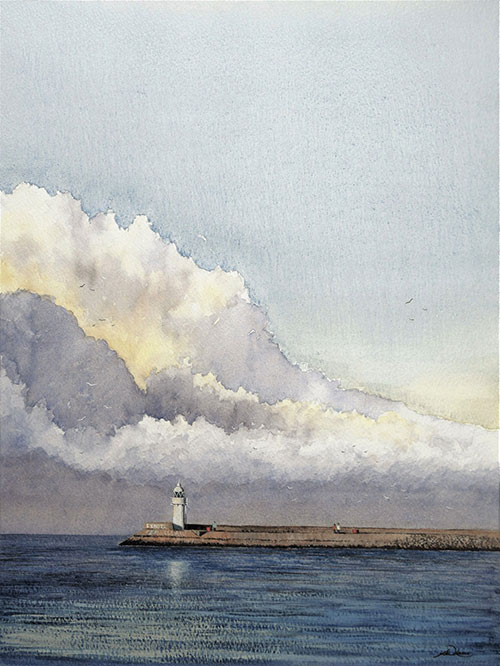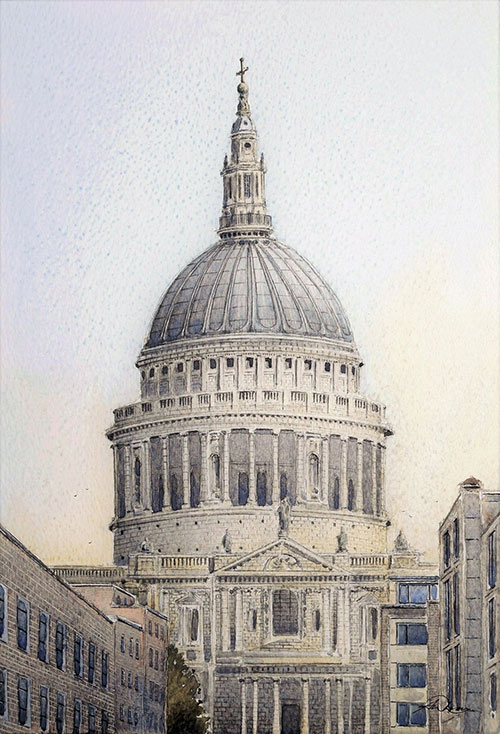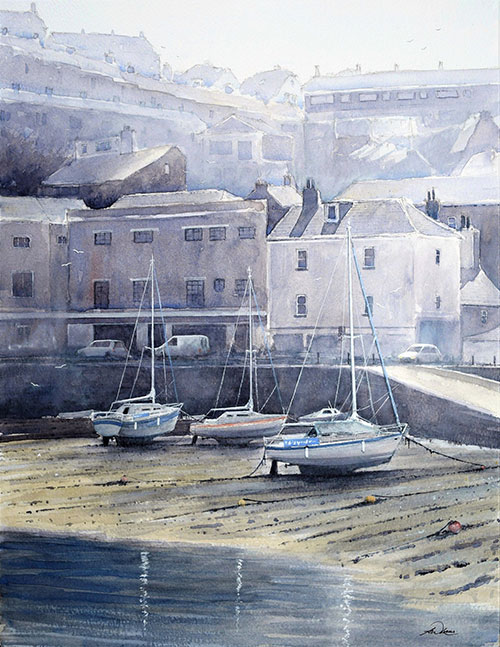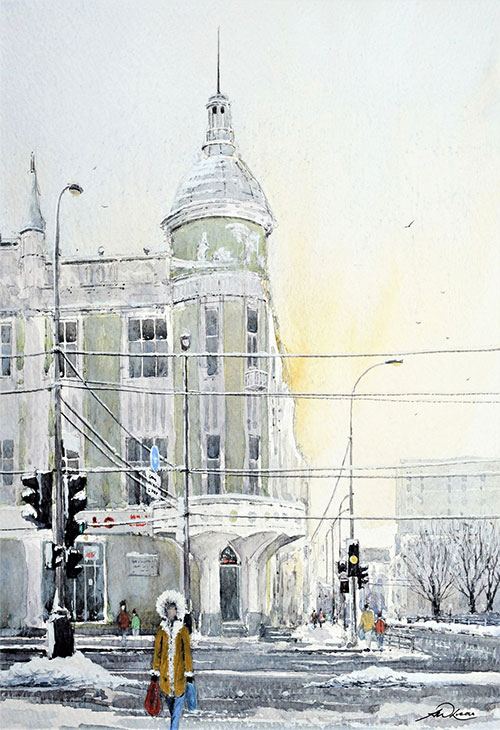Art, // July 26, 2021
Andrew Lucas — ARTIST
Interview with artist Andrew Lucas —
1. Who are you and what do you do?
My name is Andrew Lucas and I am an artist from the UK. I paint in watercolour with many subjects that include architectural studies, landscapes and seascapes from various locations.
2. Why art?
I feel art is the best method of self expression, and allows you to convey a message through artistry. It has always offered the only true escape into a different yet familiar world for me as an artist, and I have found that using my artistry has always offered a meaningful way of enriching life.
3. What is your earliest memory of wanting to be an artist?
I have always enjoyed the challenge of drawing, and through growing up I had a stronger desire to be an artist. I would see many different paintings as a child, and I remember thinking if I could learn how to paint in such a way. Over time, my desire to create only became stronger and carried on through into my teens and adulthood.
4. What are your favorite subject(s) and media(s)?
I would have to say that I enjoy architecture and urban landscape the most, and this is for a number of reasons. The intricacy and patience needed to paint and draw architecture offers the greatest challenge.This isn’t to say however that I don’t enjoy other subjects also, landscapes, seascapes, still life etc, all bring their own qualities to a painting. Where I grew up, I saw historical architecture everyday and this had a huge influence on me. My favourite media is watercolour, and because of its ability to create soft,gentle work or strong and robust pieces, I find it only adds to its appeal for me. I enjoy the careful planning that is needed in watercolour, and for me this also adds to the excitement.
5. How do you work and approach your subject?
Once I have found a suitable subject, I will begin by sketching up ideas with pencil until I am happy with the composition. I will then begin the main draft on watercolour paper, setting out perspective and what to keep, to add or to remove within the piece. I will always refer to initial sketches for reference points through the painting process, as this also gives the tonal value of the piece. I enjoy both plein air and studio work, as both offer different qualities to my approach in painting. Plein air can offer spontaneity that at times studio work cannot match, whereas studio time gives you the chance to analyze a piece much more deeply and accurately. I think it is important to use and combine both methods of approach to offer a good middle ground and broad spectrum to your work.
6. What are your favorite art work(s), artist(s)?
I have been influenced by many artists, including the old masters, John Constable, J.M.W. Turner, Cannaleto, Rembrant, Claude Monet to name a few. There are equally some very talented modern artists whose work I appreciate and respect and enjoy seeing very much. I find it very interesting and important to look at many different artists using many different techniques and media, I think this gives a feeling of collective grounding as an artist.
7. What are the best responses you have had to your work?
Some of the best comments I have received from people is the way they feel a sense of nostalgia when viewing the paintings. People also seem to appreciate the detailed nature of the work itself, and how they have seen something that they had never noticed before. This is particularly true with urban landscapes, whereby a glance above the facade for example, can offer such interest for the eye and for a painting, and in turn interest for the audience themselves.
8. What do you like about your work?
I enjoy the challenge of capturing detail, while maintaining the atmosphere of a place or building. I like to build up colour gradually, rather than using very strong pigment immediately, as I find this can at times make the work feel overpowering. When working up a painting whether that be a landscape, seascape or indeed an urban study, I will apply a similar method of approach.
9. What advice would you give to other artists?
I think it is important to be yourself and find your own path as an artist, to create your own style and approach. It has at times become easy to imitate other artists, and this may be ok when learning to paint, but your own true artistry must be discovered before you can find who you are as an artist. Art is a natural element that is with you everyday, it is as much a state of mind, a spiritual understanding perhaps, as it is to physically draw or paint. I believe both are equally important, and I have adopted this ideal since I first started painting. I find this in turn gives such a sense of achievement and true belonging to your creative self, and I believe a more grounded and true approach will follow.
10. Where do you see yourself in 5-10 years?
I hope that my artistry continues to take me to new places yet to be ventured. I plan to hold more solo exhibitions both national and international, working to increase exposure of my work. To continue with the forward momentum that I have always adopted and that has served me well so far. I hope that my work is as accessible as possible for all to enjoy in as many places as I can. I aim to continue being true to my path and my art, with the hope that the message I am trying to convey through my work, will only continue to grow.
LINKS —
Website: http://theandrewlucasgallery.co.uk
Facebook: www.facebook.com/andrew.lucas.75286/
Instagram: www.instagram.com/andrewlucaspainting/
Linkedin: www.linkedin.com/in/andrew-lucas-41319646/
Twitter: twitter.com/LucasPaintings
Video: https://www.instagram.com/p/BxrWDMynm69/?utm_source=ig_web_copy_link




